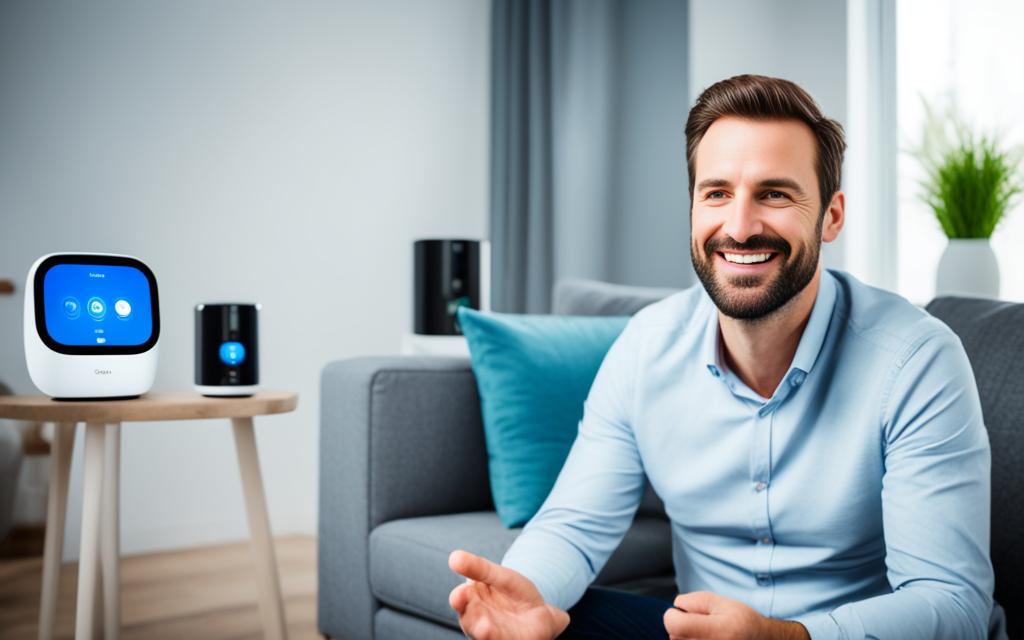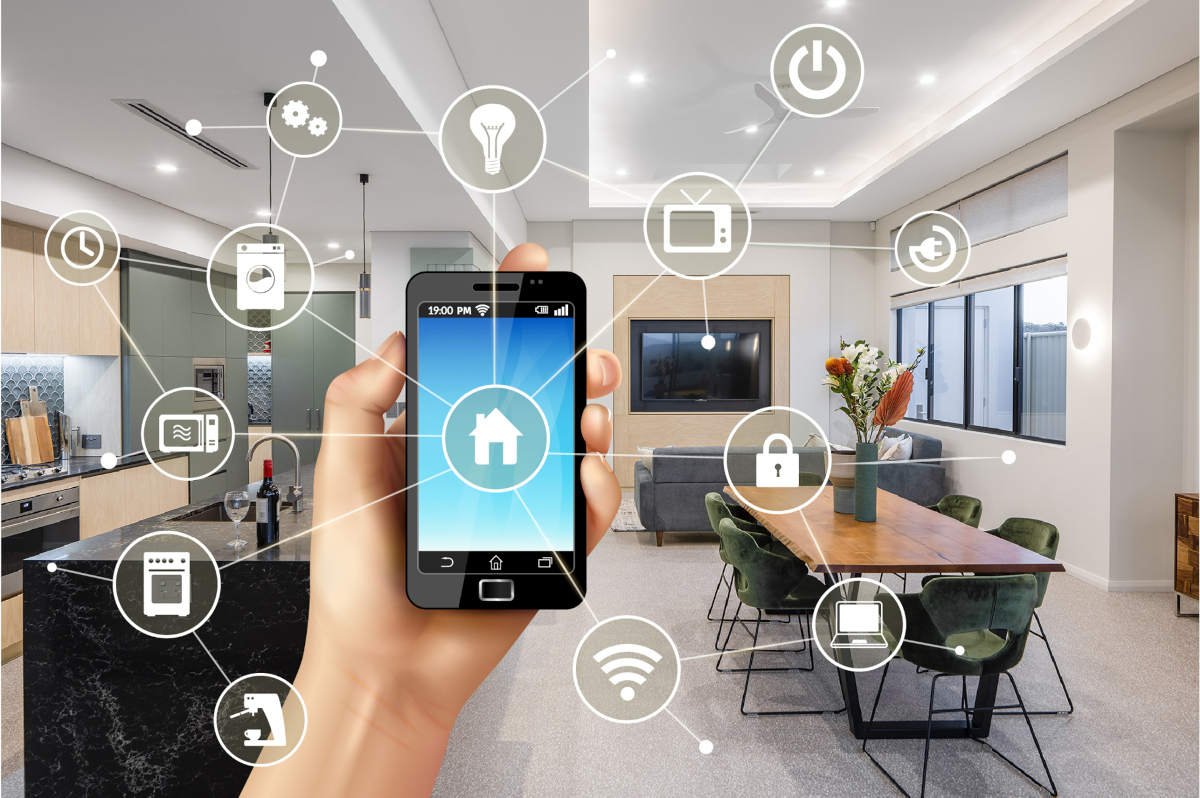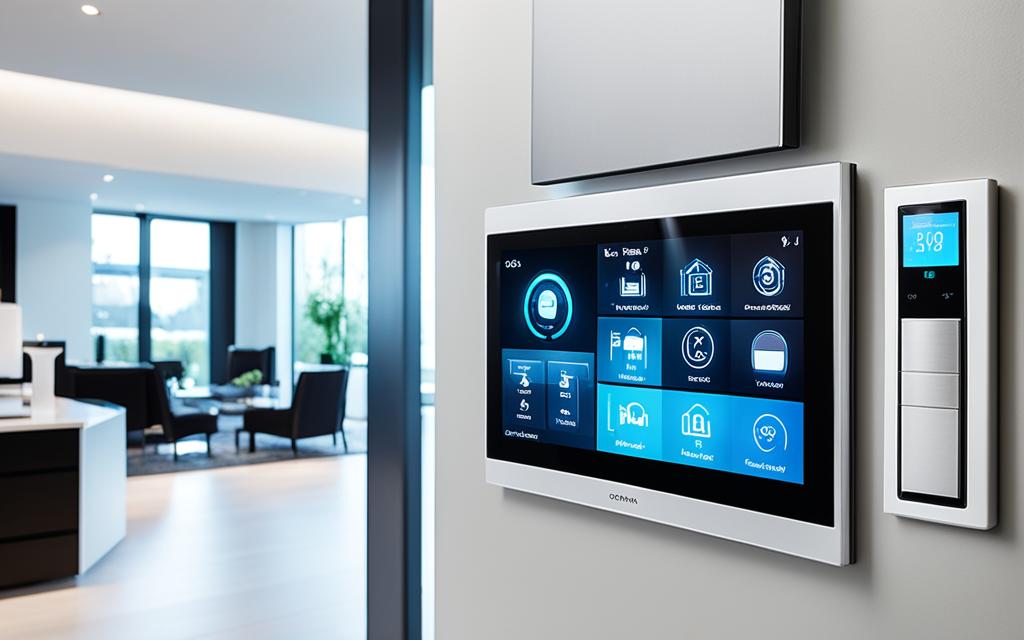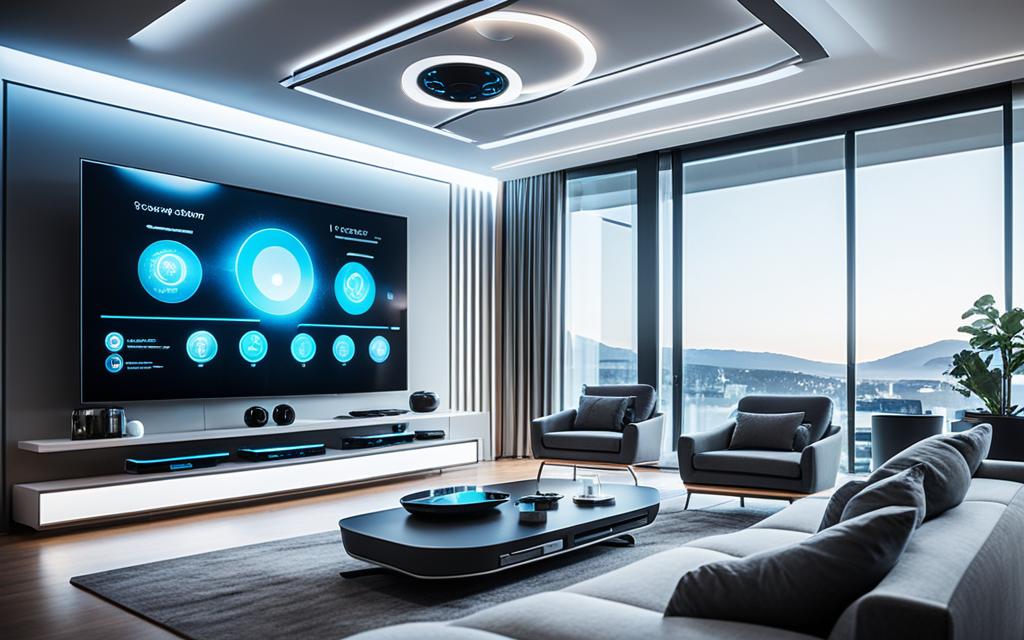Voice-controlled devices have revolutionized the way we interact with technology, offering a seamless and convenient experience in our daily lives. From smart speakers like Amazon Echo and Google Nest to virtual assistants like Siri and Alexa, voice control has become an integral part of our smart homes.
Using advanced voice recognition technology and AI assistants, these devices allow us to perform various tasks with simple voice commands. Need to know the weather forecast? Just ask. Want to turn off the lights before bed? Just say the word. Voice control offers a hands-free and effortless way to communicate, organize, and navigate our smart home devices.
But voice control goes beyond just convenience. It also provides personalization and accessibility benefits. These devices can recognize different users’ voices, allowing for personalized experiences tailored to individual preferences. Moreover, voice control offers a more accessible interface for individuals with disabilities or those who may struggle with traditional technology interfaces.
Whether you’re a tech enthusiast or looking to simplify your daily routine, voice-controlled devices are a must-have addition to any smart home setup. With their wide range of capabilities and compatibility with various smart home devices, they offer endless possibilities for maximizing convenience and enhancing your everyday life.
So, let’s dive deeper into the world of voice control and discover how it works, the benefits it brings, and how you can set it up in your own smart home. Get ready to unlock the full potential of voice-controlled devices!
The Benefits of Voice Control
Voice control offers a multitude of benefits, making it an invaluable feature for modern smart homes. One of its primary advantages is the convenience it provides. By using voice commands, users can perform tasks without the need for physical interaction with their devices. This hands-free operation allows for seamless multitasking and enhances overall efficiency.
Moreover, voice control enables the effortless integration of various smart home devices, creating a connected ecosystem. From smart speakers to lighting systems and security cameras, voice commands can connect and control these devices, simplifying day-to-day tasks and improving the overall functionality of the home.
Another significant benefit of voice control is personalization. Voice recognition technology allows devices to remember past data and settings, creating a personalized experience for each user. With the ability to recognize different voices, voice-controlled devices can provide tailored responses and access specific user preferences.
Additionally, voice control improves accessibility for individuals with disabilities and those who may not be comfortable using traditional technology interfaces. By offering a hands-free and intuitive control method, voice commands make smart home devices more accessible and user-friendly.
Overall, the benefits of voice control, including convenience, device connectivity, personalization, and accessibility, make it a valuable addition to any modern smart home setup.
How Voice Control Works in Smart Homes
Voice control is an integral part of the smart home experience, enabling users to interact with their devices using spoken commands. This section will delve into the inner workings of voice control technology, explaining how it relies on voice recognition and integration to provide a seamless and personalized user experience.
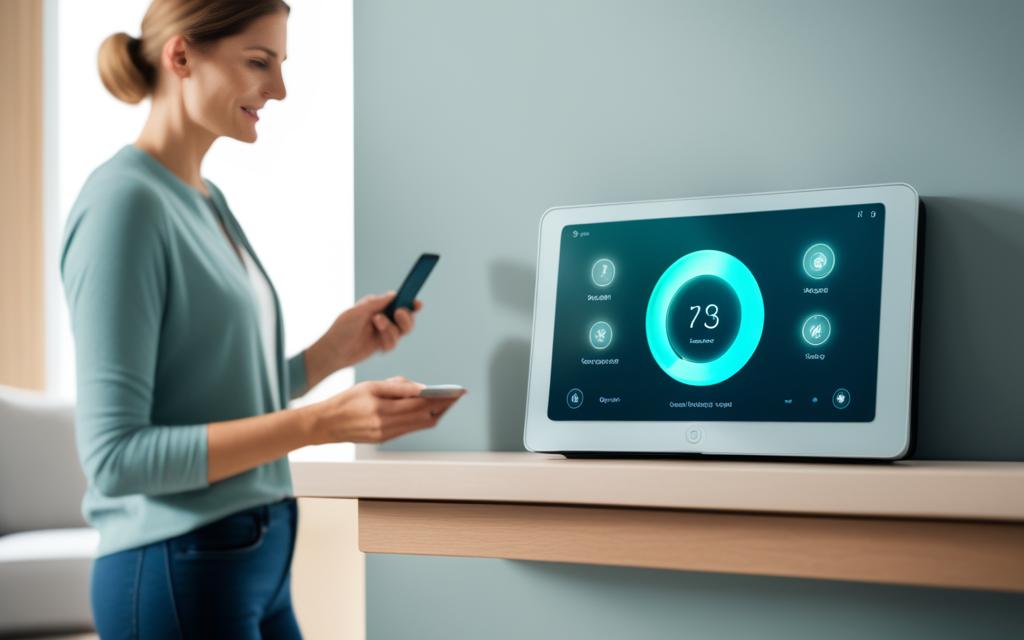
The Role of Voice Recognition
At the heart of voice control lies voice recognition technology, which enables devices to understand and interpret spoken commands. By employing sophisticated algorithms and machine learning techniques, voice recognition technology can accurately identify and distinguish between different voices. This allows for personalized experiences, where each user’s voice can be recognized and associated with specific settings and preferences.
Integration with Smart Home Devices
In order to control various smart home devices, voice-controlled devices such as smart speakers and virtual assistants need to integrate seamlessly with these devices. Through integration, users can issue voice commands to control lights, thermostats, locks, security systems, and a multitude of other connected devices. This integration is made possible through the use of standardized communication protocols and APIs, allowing voice-controlled devices to interact with and command compatible smart home devices.
Customization for Personalized Experiences
Voice control technology also offers extensive customization options, allowing users to tailor their voice control settings and routines to their specific needs and preferences. Users can create customized voice commands to trigger specific actions or routines, making it even more convenient to navigate and control their smart homes. This level of customization ensures that voice control truly becomes an extension of the user’s lifestyle, enhancing convenience and efficiency.
In conclusion, voice control in smart homes harnesses the power of voice recognition, integration, and customization to provide users with a seamless and intuitive experience. By understanding how voice control technology works, users can fully leverage its capabilities to create a truly connected and personalized smart home environment.
Types of Voice Control Devices for Smart Homes
When it comes to voice control in smart homes, there are various device options available to suit different needs and preferences. These devices leverage voice recognition technology to enable seamless control and interaction with your smart home ecosystem. Let’s explore the different types of voice control devices that can elevate your smart home experience.
Smart Speakers
Smart speakers, such as the Amazon Echo and Google Nest, have gained immense popularity in recent years. These devices not only provide high-quality sound but also serve as virtual assistants with voice control capabilities. By simply using voice commands, you can ask your smart speaker to play music, answer questions, set reminders, and even control other devices in your smart home. These powerful devices integrate voice control technology with artificial intelligence, enabling a truly immersive and convenient experience.
Smart Displays
If you want to take your voice control experience to the next level, smart displays are an excellent choice. Devices like the Amazon Echo Show and Google Nest Hub combine the functionality of smart speakers with interactive touchscreens. With a smart display, you can not only use your voice to control devices but also receive visual feedback and information. Whether it’s watching videos, browsing recipes, or video calling, smart displays offer a more engaging and intuitive way to interact with your smart home.
For a visual representation of a smart display, refer to the image below:
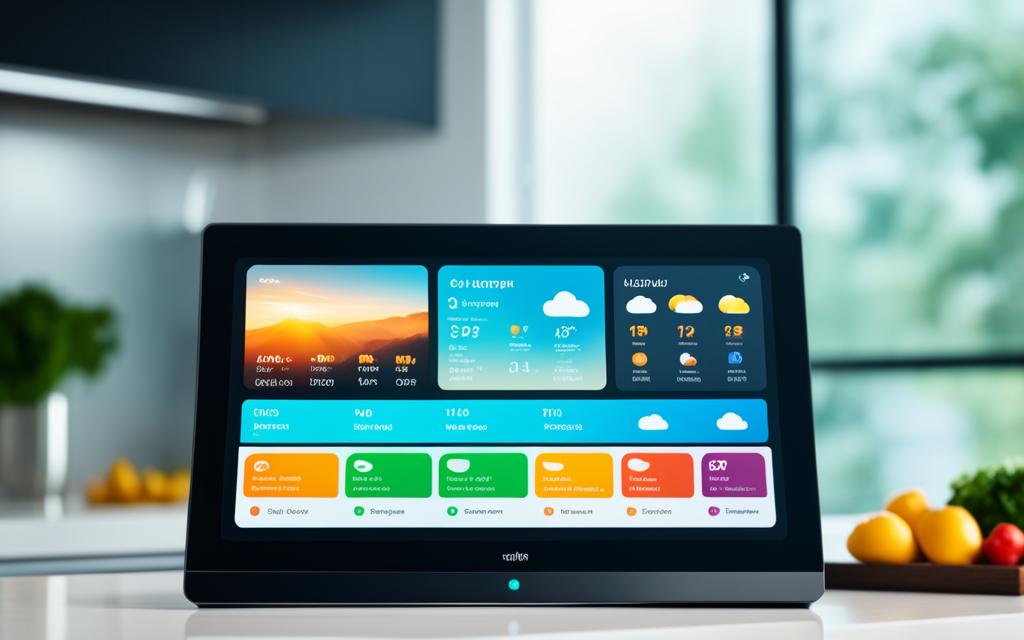
Voice-Enabled Remotes
Another type of voice control device for smart homes is voice-enabled remotes. These remotes are designed specifically for home entertainment systems, allowing you to control your TV, streaming services, and other audiovisual devices with just your voice. Instead of fumbling for buttons or navigating complex menus, you can simply speak your commands to enjoy a seamless and hands-free entertainment experience. Voice-enabled remotes provide effortless control over your favorite content and enhance the overall convenience of your smart home setup.
With such a diverse range of voice control devices available, you can choose the ones that best align with your needs and preferences. Whether it’s a smart speaker, a smart display, or a voice-enabled remote, integrating voice control into your smart home ecosystem can bring a new level of convenience and interactivity.
Setting Up Voice Control in Smart Homes
Setting up voice control in a smart home is a straightforward process that involves configuring compatible devices and integrating them with a voice assistant or virtual assistant. To ensure a smooth setup, users need to ensure that their smart home devices are compatible with their chosen voice control system and follow the setup instructions provided by the manufacturer.
The first step in the voice control setup is to connect the devices to the home network. This typically involves connecting the devices to the Wi-Fi network using the manufacturer’s instructions.
Once the devices are connected to the network, users may need to install corresponding mobile apps on their smartphones or tablets. These apps allow users to control and manage their devices using their voice commands.
After installing the apps, users will need to link their devices to their voice assistant account. This step ensures that the voice assistant recognizes and controls the connected devices. The exact process may vary depending on the voice assistant being used.
During the setup process, users may also explore additional features and customization options offered by the voice control system. These options can enhance the overall functionality and personalization of the smart home setup.

Voice Control Compatible Smart Home Devices
When it comes to creating a fully integrated and convenient smart home experience, voice control is a game-changer. With the ability to control various devices using only your voice, compatible smart home devices are making everyday tasks easier than ever. From lighting systems to thermostats, security cameras to smart locks, the possibilities are endless.
One of the most popular applications of voice control is in lighting systems. With voice commands, you can adjust the brightness levels, turn lights on or off, and even create customized lighting scenes to suit different moods or occasions.
Smart thermostats are another category of voice control compatible devices that allow you to effortlessly manage your home’s temperature. From setting temperature preferences to controlling your HVAC system, all it takes is a simple voice command.
When it comes to home security, voice control can be a valuable tool. By integrating security cameras and smart locks with voice control systems, you can remotely monitor your property and control access with ease. Whether you’re checking who’s at the front door or securing your home before going to bed, voice commands make it simple and convenient.
As the demand for voice control technology continues to grow, more and more smart home devices are becoming compatible. The range of compatible devices includes not only lighting systems, thermostats, security cameras, and smart locks, but also a wide array of other devices like home entertainment systems, kitchen appliances, and more.
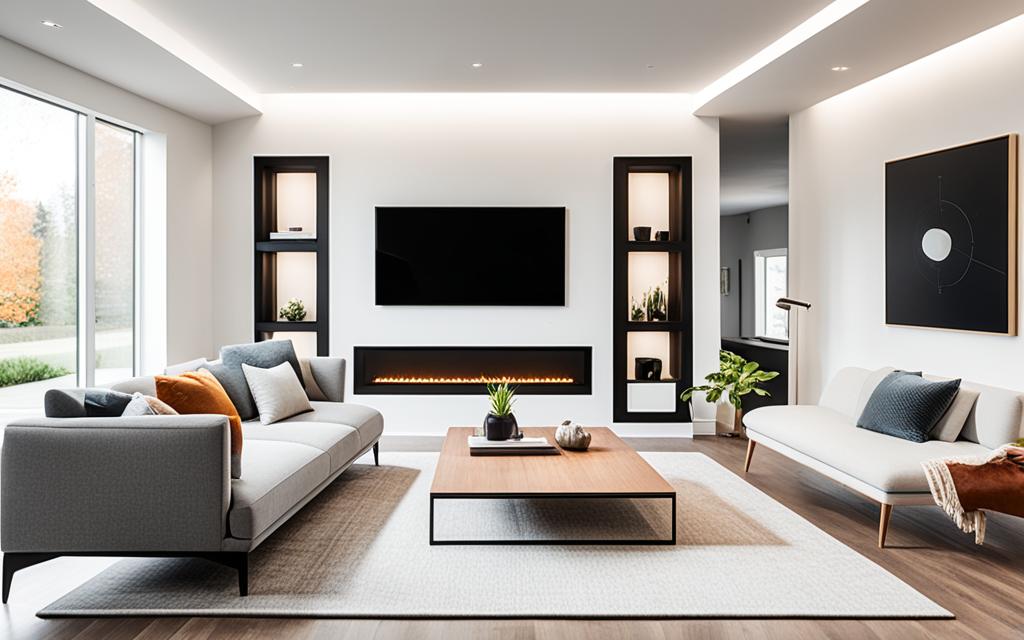
Voice Control and Home Security
Voice control technology offers more than just convenience, it can also significantly enhance home security. By integrating voice commands with surveillance cameras, alarm systems, and motion sensors, users can easily monitor their property and ensure its safety.
With voice-controlled surveillance, homeowners can simply use their voice to view live camera feeds and keep an eye on their surroundings. This seamless integration allows for quick and effortless monitoring, eliminating the need for manual controls or complex interfaces.
In addition to camera surveillance, voice control can also be used to arm or disarm alarm systems. By simply uttering a command, users can activate or deactivate their security systems, providing them with the convenience and peace of mind they need. Furthermore, voice control can be utilized to automate security routines, such as setting up schedules for lights and alarms, creating an illusion of occupancy to deter potential intruders.
By combining the power of voice control with security devices like surveillance cameras, alarm systems, and motion sensors, homeowners can enjoy enhanced security, seamless monitoring, and effortless control over their home’s security measures.
FAQ
How do voice-controlled devices enhance convenience?
Voice-controlled devices allow users to perform tasks hands-free and without physical interaction. They can also seamlessly integrate with smart home devices, providing enhanced functionality and responsiveness for a more convenient user experience.
What are the benefits of using voice control in smart homes?
Voice control offers personalization and accessibility benefits, remembering past data and recognizing different voices. It also improves accessibility for individuals with disabilities and those who prefer not to use traditional technology interfaces.
How does voice control technology work in smart homes?
Voice control relies on voice recognition technology and natural language processing (NLP) algorithms. Smart devices interpret voice commands and communicate with connected smart home devices to execute tasks.
What types of devices offer voice control capabilities?
Smart speakers, smart displays, and voice-enabled remotes are examples of devices that offer voice control capabilities and serve as virtual assistants, providing an interactive and immersive experience.
What is involved in setting up voice control in a smart home?
Users need to ensure their smart home devices are compatible and follow setup instructions provided by the manufacturer. This may involve connecting devices to the home network, installing mobile apps, and linking them to the voice assistant account.
Which smart home devices are compatible with voice control?
Lighting systems, thermostats, security cameras, and smart locks are some of the devices that can be controlled using voice commands. The range of compatible devices continues to expand.
How can voice control enhance home security?
Voice control can integrate with surveillance cameras, alarm systems, and motion sensors, allowing users to monitor their property, view live camera feeds, and control their security systems with simple voice commands.

